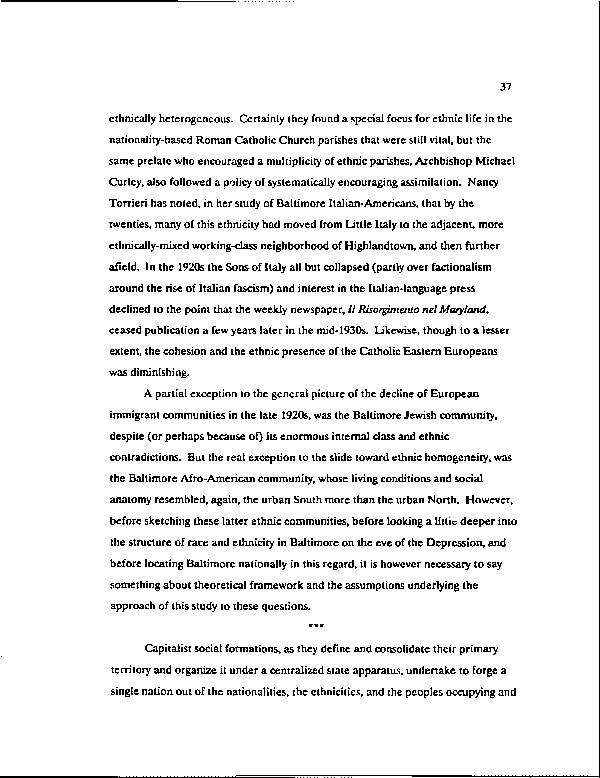|
37
ethnically heterogeneous. Certainly they found a special focus for ethnic life in the
nationality-based Roman Catholic Church parishes that were still vital, but the
same prelate who encouraged a multiplicity of ethnic parishes, Archbishop Michael
Curley, also followed a policy of systematically encouraging assimilation. Nancy
Torrieri has noted, in her study of Baltimore Italian- Americans, that by the
twenties, many of this ethnicity had moved from Little Italy to the adjacent, more
ethnically-mixed working-class neighborhood of Highlandtown, and then further
afield. In the 1920s the Sons of Italy all but collapsed (partly over factionalism
around the rise of Italian fascism) and interest in the Italian-language press
declined to the point that the weekly newspaper, // Risorgimento net Maryland,
ceased publication a few years later in the mid- 1930s. Likewise, though to a lesser
extent, the cohesion and the ethnic presence of the Catholic Eastern Europeans
was diminishing.
A partial exception to the general picture of the decline of European
immigrant communities in the late 1920s, was the Baltimore Jewish community,
despite (or perhaps because of) its enormous internal class and ethnic
contradictions. But the real exception to the slide toward ethnic homogeneity, was
the Baltimore Afro-American community, whose living conditions and social
anatomy resembled, again, the urban South more than the urban North. However,
before sketching these latter ethnic communities, before looking a litlic deeper into
the structure of race and ethnicity in Baltimore on the eve of the Depression, and
before locating Baltimore nationally in this regard, it is however necessary to say
something about theoretical framework and the assumptions underlying the
approach of this study to these questions.
Capitalist social formations, as they define and consolidate their primary
territory and organize it under a centralized state apparatus, undertake to forge a
single nation out of the nationalities, the ethnicities, and the peoples occupying and
|

